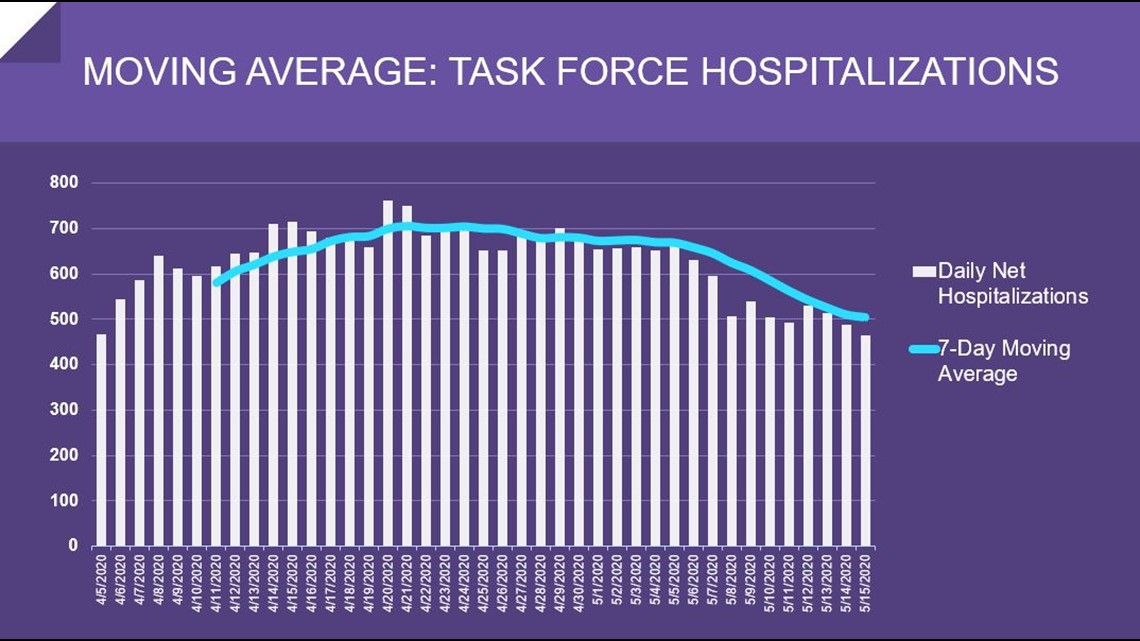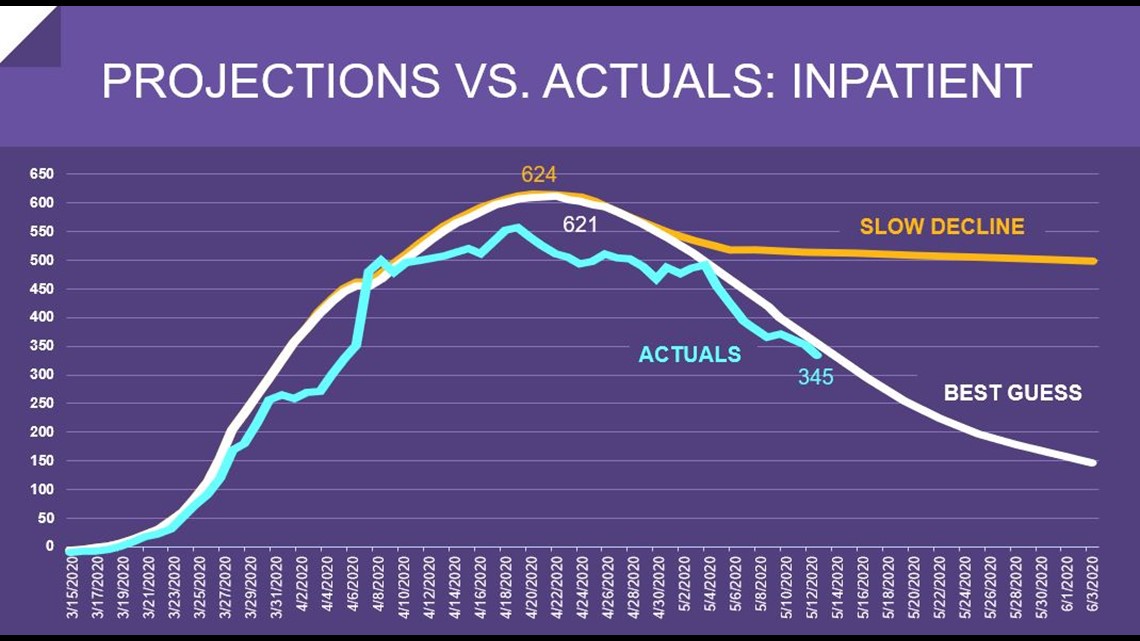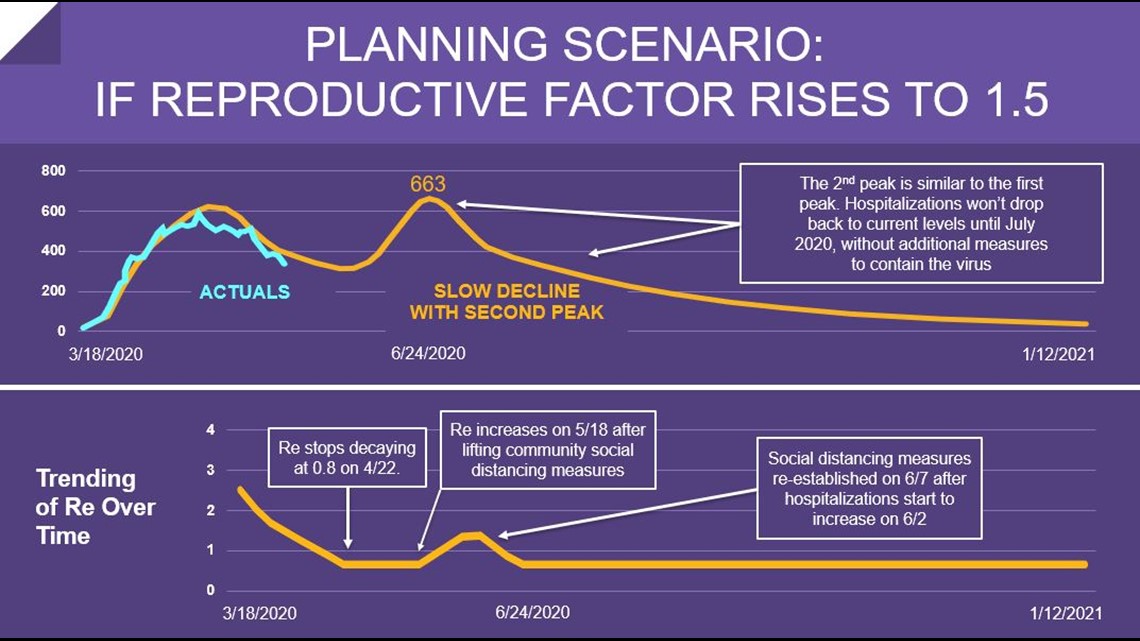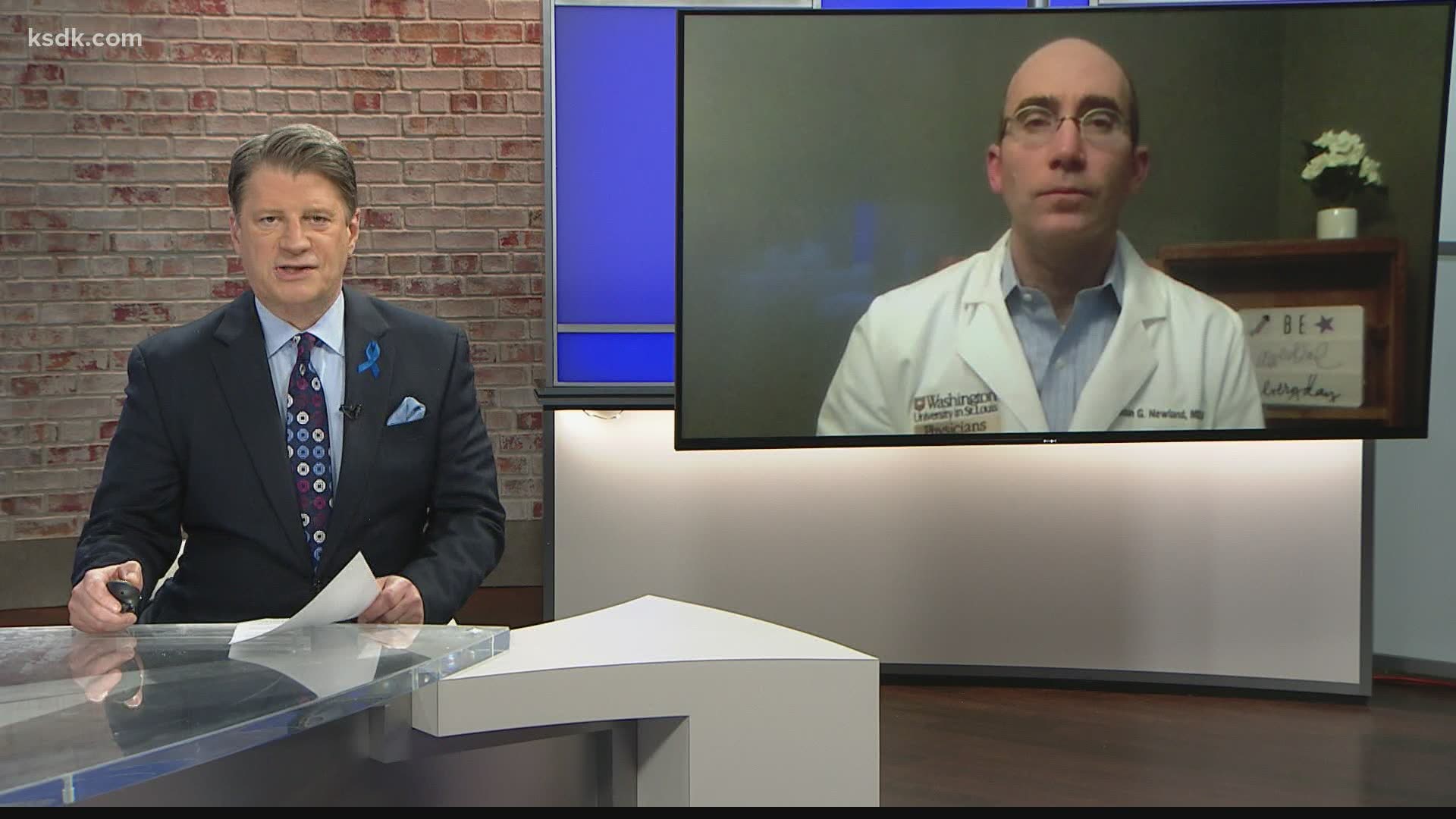ST. LOUIS — The St. Louis Metropolitan Pandemic Task Force released encouraging metrics over the past week, showing the 7-day moving averages for new COVID-19 patients and total hospitalizations is continuing to decline.
The task force reported a total of 464 COVID-19 patients in area hospitals on Friday. That's down from 488 reported on Thursday.
The number of COVID-19 patients in area ICUs decreased from 125 on Thursday to 120 on Friday.
However, the number of patients on ventilators increased, from 84 on Thursday to 88 on Friday.
Across the task force hospitals, 43 COVID-19 patients were discharged on Thursday, bringing the total number of coronavirus patients discharged to 1,827.
To watch Incident Commander Dr. Alex Garza's entire press conference, you can click here.


Garza said the region has "continued to show nice progress" with rolling averages showing steady decline since late April.
Hospitalizations are now at the lowest they've been since the task force began tracking the data.
Garza presented updated graphs, showing how actual COVID-19 cases lined up with projected models.
“The numbers are tracking very well with our best guess numbers," Garza said. “It's really nice that it’s following that number”
Garza said a decrease in the transmission rate went a long way towards flattening the curve.


Garza and the task force wanted to make it abundantly clear, though, that it is not the time to relax.
“My biggest concern is that people will equate the lifting of shelter-in-place with the virus being gone," Garza said.
“We know it (the number of infected patients in the area) won’t reach zero at least until we get a vaccine," he said.
Even as places begin to reopen, Garza implored people to continue with best practices to help stop the spread of the virus such as wearing a mask, washing your hands, staying 6 feet apart, staying at home if you can, cleaning surfaces and not gathering in groups of more than 10 people.
“Everyone in the community needs to be practicing these things to help keep the transmission rate low," Garza said.
He also released some metrics that show what could happen if the public does not continue social distancing measures while places begin to open back up, and the reproductive factor rises.



